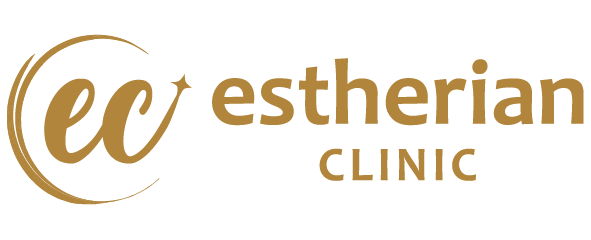What Is Face Fat Injections?
Face fat injection is a procedure that uses fat as a natural filler to improve the appearance of the face. It is one of the most popular procedures in plastic surgery because it is considered a natural, safer, more effective, and long-term alternative to traditional fillers. Unlike filler injections, which need to be repeated every 6-13 months, fat injections can last for many years.
The primary cause of facial changes as we age is the loss of fatty tissue, making fat injections an ideal option to replenish the lost volume and restore fullness, particularly in areas like the temples, eyes, eyelids, nose line, mouth, cheeks, and jawline.
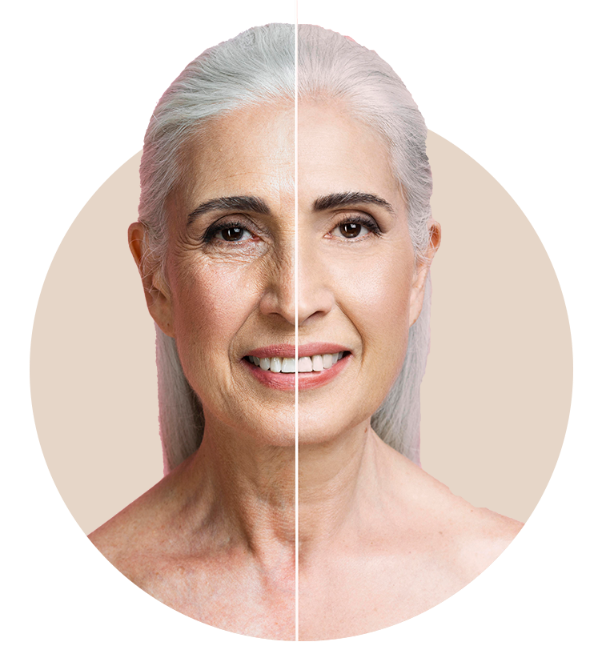
Why Facial Volume Matters
The volume and structure of the face play a crucial role in how youthful and balanced we appear. As we age, or due to genetics, the face can lose fat in key areas such as the cheeks, temples, and under the eyes. This loss can lead to hollow or sunken areas, accentuated wrinkles, and an overall tired or aged appearance. Even minor asymmetries or volume deficiencies can significantly impact facial harmony, affecting not only aesthetics but also self-confidence.
Facial fat injections, also known as autologous fat grafting or fat transfer, address these concerns by restoring volume, contouring the face, and improving symmetry. This procedure allows for natural-looking results because it uses your own fat, minimizing the risk of rejection or allergic reaction. By targeting areas where fat loss is most noticeable, the procedure enhances your facial proportions, creating a balanced, rejuvenated appearance.
- Enhances cheek fullness for a youthful look
- Softens deep folds and lines
- Improves overall facial symmetry
- Restores natural contours lost due to aging or weight fluctuations
The restoration of facial volume is more than just cosmetic; it can transform the overall perception of your face, making you appear more vibrant, refreshed, and balanced.
Causes of Facial Volume Loss
Facial volume loss occurs due to a combination of natural aging processes, lifestyle factors, and genetics. Understanding these causes helps explain why some people experience hollowness or sagging in certain areas of the face while others maintain a fuller appearance.
- Aging: As we age, the body gradually loses fat, including in the face. This can result in sunken cheeks, hollow temples, and more pronounced nasolabial folds. Skin elasticity also diminishes, which exacerbates the appearance of volume loss.
- Genetics: Some individuals are naturally predisposed to having thinner facial fat pads or a longer-lasting volume loss. Genetics determines how fat is distributed in the face and how the face ages over time.
- Weight Fluctuations: Significant weight loss can reduce facial fat, creating a gaunt or hollowed appearance. Conversely, weight gain can temporarily mask volume loss, but does not replace the structural fat that provides long-term facial contour.
- Lifestyle Factors: Poor nutrition, smoking, excessive sun exposure, and high levels of stress can all accelerate the loss of facial fat and collagen, making volume depletion more noticeable.
- Medical Conditions: Certain health issues, such as hormonal imbalances or chronic illnesses, can lead to premature fat loss in the face.
Addressing facial volume loss through fat injections targets these underlying deficits, restoring a natural, youthful contour. By using your own fat, the procedure also ensures that results are harmonious with your individual facial structure.
Techniques for Face Fat Injections
Face fat injections, also known as autologous fat grafting or facial fat transfer, involve harvesting fat from one area of your body and transferring it to areas of the face that require volume. This method is highly versatile, allowing for natural-looking results that integrate seamlessly with your facial anatomy.
- Fat Harvesting: The first step involves extracting fat from a donor area, usually the abdomen, thighs, or flanks, using a gentle liposuction technique. The goal is to collect healthy fat cells while minimizing trauma to the tissue, ensuring maximum survival of the grafted fat.
- Fat Processing: Once harvested, the fat is purified and prepared for injection. This often involves centrifugation or filtration to remove excess fluid and damaged cells, leaving only the healthiest fat for optimal results.
- Fat Injection: Using fine cannulas, the surgeon carefully injects the processed fat into target areas of the face. Common sites include the cheeks, temples, under-eye area, nasolabial folds, and jawline. The fat is strategically layered to create smooth, natural contours and avoid lumps or unevenness.
- Precision and Customisation: One of the key benefits of fat grafting is the ability to customise the procedure for each patient. Surgeons can adjust the volume, placement, and depth of fat to address asymmetry, restore youthful fullness, or enhance specific facial features.
- Combination with Other Procedures: Fat injections can also be combined with other facial rejuvenation techniques, such as facelifts, brow lifts, or skin resurfacing, to achieve comprehensive results. This combination allows for a more harmonious and long-lasting transformation.
This procedure leverages your own tissue, reducing the risk of allergic reactions or rejection, while providing a natural, long-lasting enhancement to the face.
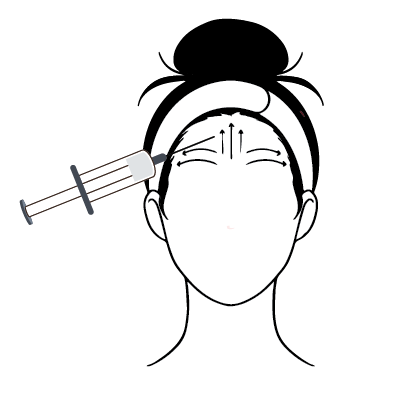
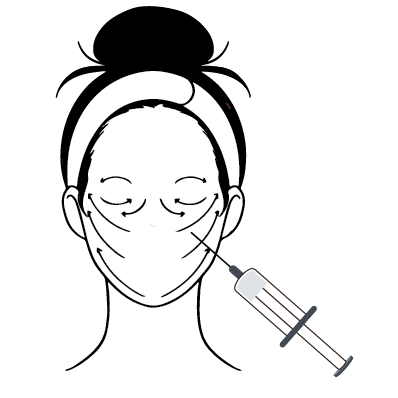
Procedures
Before Operation
Before the surgery, the surgeon will perform a thorough medical examination to ensure that you are in good health. You will also be asked to stop smoking well before the surgery. Avoid taking aspirin or certain anti-inflammatory drugs as they can increase the risk of bleeding.
During Operation
During the procedure, local anesthesia is typically used, and the surgery generally takes about one hour. Fat is suctioned from specific areas of the body, such as the hips and thighs, using a cannula. This fat is then purified before being re-injected into the face using fine needles. The procedure is minimally invasive, and most patients can leave the hospital the day after the operation.
After Operation
To reduce swelling and bruising, ice packs should be applied during the first two days following the surgery. The swelling typically decreases starting from the third day and continues to improve over the next week. Most side effects should subside completely within three weeks after the procedure.
Who is a Good Candidate for Face Fat Injections?
Ideal candidates for face fat injections are healthy, non-smoking individuals with good skin health. Smoking and certain medical conditions can affect healing and fat survival, so candidates should be in overall good physical condition.
It’s also important to have realistic expectations. Face fat injections can restore youthful volume, smooth wrinkles, and improve facial contours, but they are not a substitute for major surgery or a cure for aging. Some swelling or minor irregularities may occur during healing, and occasionally more than one session is needed for the best results.
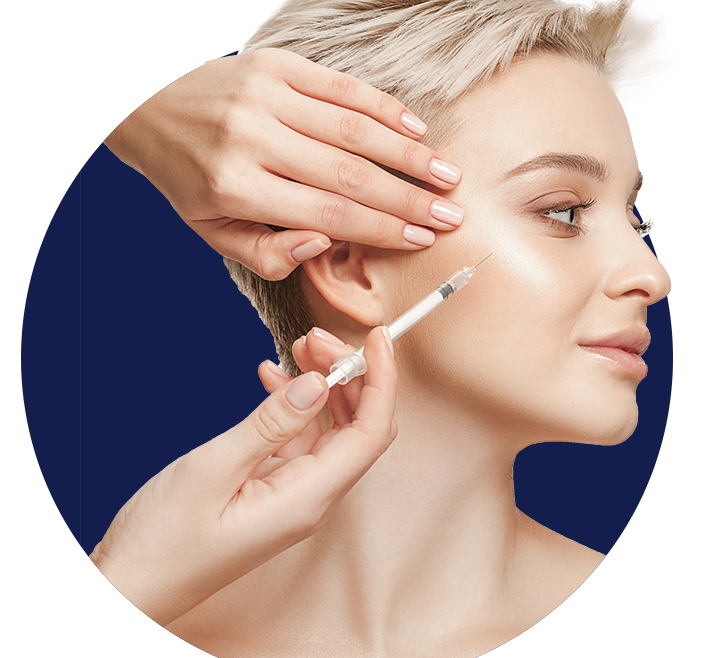
What are the Benefits of Face Fat Injections?
Face fat injections, also known as autologous fat grafting, offer a natural way to restore youthful facial volume and improve contours. By using your own body’s fat, the procedure provides a biocompatible filler that integrates seamlessly with existing tissue.
Key benefits include:
- Restores Volume: Loss of facial fat over time can lead to hollow cheeks, sunken eyes, or a gaunt appearance. Fat injections replenish this volume, giving a softer, more youthful look.
- Smooths Wrinkles and Fine Lines: Transferred fat fills in areas with wrinkles, smile lines, or nasolabial folds, producing a smoother facial texture.
- Improves Facial Contours: Strategic placement can enhance cheekbones, jawline, and under-eye areas, creating balanced, harmonious facial proportions.
- Long-Lasting Results: Because the injected fat is living tissue, a portion survives permanently, providing longer-lasting results than temporary fillers.
- Natural and Biocompatible: Using your own fat reduces the risk of allergic reactions or rejection compared to synthetic fillers.
- Dual Benefit: The procedure also slims the donor area, as fat is harvested from regions like the abdomen, thighs, or flanks, subtly contouring the body.
Overall, face fat injections combine aesthetic improvement with natural materials, offering both subtle and dramatic rejuvenation depending on the patient’s goals.
What are the Risks of Face Fat Injections?
While face fat injections are generally safe when performed by experienced surgeons, like any medical procedure, they carry some potential risks. Understanding these helps patients make informed decisions and follow post-operative care instructions carefully.
Common Side Effects:
• Swelling and Bruising: These are normal and expected around the injection and donor sites. Swelling usually peaks within 48–72 hours and gradually subsides over 1–2 weeks. Bruising may linger slightly longer, depending on individual healing.
• Pain or Discomfort: Mild soreness can occur at both the donor and injection sites. Pain is typically manageable with prescribed medications.
• Redness or Minor Tenderness: Temporary irritation at the injection site is common but usually resolves within a few days.
Potential Complications (Rare):
• Infection: As with any procedure that involves incisions or injections, there is a small risk of infection. Strict sterilization protocols and proper post-op care minimize this risk.
• Fat Resorption: Not all transferred fat survives. Typically, 50–70% of the fat remains permanently, which may necessitate a follow-up session for optimal results.
• Asymmetry: Uneven fat distribution can occur if fat grafts are absorbed unevenly. An experienced surgeon carefully plans placement to minimize this risk.
• Lumps or Nodules: Small irregularities can form if fat is not evenly injected or distributed. Most resolve over time, but some may require minor correction.
• Nerve or Tissue Damage: Rarely, inadvertent trauma to nerves or surrounding tissue can occur during harvesting or injection. This is highly uncommon with skilled surgeons.
• Overcorrection or Under-correction: Achieving perfect volume requires experience, as overfilling or underfilling can affect facial aesthetics. Follow-up adjustments may occasionally be needed.
Risk Reduction Tips
- Choose a board-certified surgeon experienced in fat grafting procedures.
- Follow pre- and post-operative instructions carefully, including avoiding smoking and managing medications.
- Maintain proper hygiene at donor and injection sites to prevent infections.
- Attend all follow-up appointments to monitor results and address any concerns promptly.
By understanding the potential risks, patients can approach face fat injections confidently, knowing that complications are rare and manageable when proper care and expertise are applied.
FAQs
How long do face fat injections last?
Face fat injections can last for many years. Unlike traditional fillers, which need to be repeated every 6-13 months, fat injections can provide more long-term results. However, the longevity of the results may vary from patient to patient.
How much do face fat injections cost?
The cost of face fat injections can vary greatly depending on several factors, including the technique used, the areas from which fat is suctioned, and whether the surgery is performed in combination with other procedures. Prices typically differ from one patient to another, and combining multiple surgeries can influence the overall cost.
What should I expect during the recovery process?
After the procedure, you can expect swelling and bruising, which should begin to subside within a few days. It is recommended to use ice packs during the first two days to reduce swelling. By the third day, swelling will start to decrease, and most side effects should be gone within three weeks.
